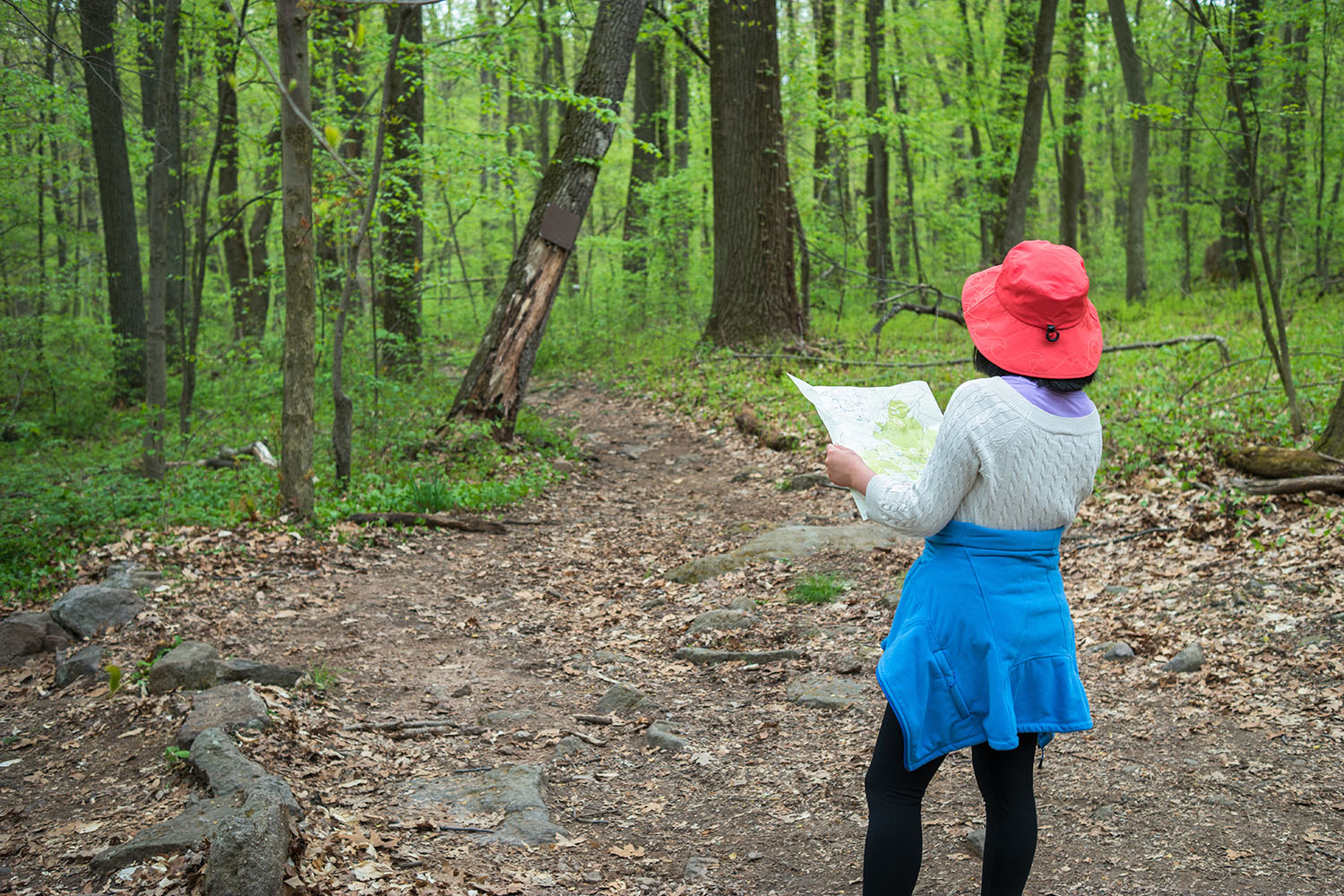
Map memory is about memorizing key features or ‘waypoints’ on a map and ticking them off in your brain as you pass them. It’s about knowing what’s coming up, and if you don’t come across these features, then it quickly triggers a red flag. Think of map memory as ticking off a series of reliable key waypoints.
Key waypoints are those features that are in some way prominent or recognisable. Bushwalkers use key features to orient themselves, know where they are, how far they still have to go, and be able to navigate along the planned route. Memorising the next few waypoints allows the bushwalker to ‘put down the map’ so to speak, or rather at least enjoy the scenery for a bit rather than having their head constantly buried in the map.
A good guide is to memorise the next three major waypoints coming up, and mentally tick them off as you pass them. If anything happens that you weren’t expecting, then you can quickly fix it up. This mental mapping process means that you quickly know where your last ‘known’ point is, so when something doesn’t feel right you notice it straight away, rather than having to figure it out from scratch each time.
The best checkpoints are linear features that cross your route. Use streams, rivers, hard-top roads, ridges, valleys, and railroads, but be aware that some map features are more reliable than others. The next best checkpoints are elevation changes such as hills, depressions and spurs.
Chose waypoints are those that are easy to remember and obvious, but not so common that they are tricky to distinguish.
Examples include:
1. Land features like knolls, saddles, ridges. Generally very reliable (or as reliable as the data first collected to make the map).
2. Route features like river crossings. May be unreliable e.g. river crossings can be rainfall dependant.
3. Constructed features like junctions, road crossings. Again, may change over time or not be reliably marked on the map in the first place.
The number of reliable checkpoints along established on-track routes will vary, but aim to get at least one or two per kilometre. Once you start looking for this detail in the terrain, you’ll find it easier and easier to pick up. Suddenly a boring flat way has subtle ups and downs that you might not have otherwise noticed. Encourage everyone else in the group to keep a lookout for these checkpoints too.
 Reliable and vague map features
Reliable and vague map features